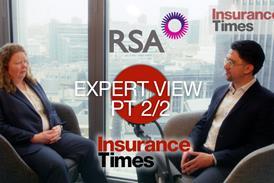Would I lie to you?

Technology is playing a greater role in insurance operations, with the use of voice analytics gaining traction in claims functions
At the heart of many fictional spy drama showdowns is some form of lie detection technology. However, the insurance industry is increasingly using this type of tool when it comes to rooting out suspicious claims.
Manjit Rana, executive vice-president for the UK and Europe, Middle East and Africa at voice recognition analysis firm Clearspeed, told Insurance Times that modern day lie detection technology can deliver tangible benefits for insurers and their clients when it comes to claims.
Read more…
Explore more claims-related content here, or discover more news analysis here
You need to register to continue reading the rest of this article and more for free.
(If you’re already registered, please sign in here.)
REGISTER NOW FOR FREE
We’re glad you’ve chosen Insurance Times as your source for industry news and hope you’ve been enjoying reading articles from our award-winning team of journalists.
Gain access to more of our exclusive, breaking stories, interviews and news analysis as it happens. Registering is quick, easy, free, and will also have the additional benefits:
- Uncover Secrets: Dive deep with exclusive annual reports, fueled by expert insights.
- News That Matters: Award-winning coverage & analysis, delivered to your inbox.
- Stay Ahead, Your Way: Daily or weekly - choose your news rhythm.
- Own Your Learning: Curate your knowledge with a personalized library.
Stay on top of the insurance game with our subscription! Get unlimited access to over 80,000 articles, in-depth analysis, exclusive reports by industry experts, and our Five-Star rating system to compare companies and find the best fit for your business needs - view subscription options.






























